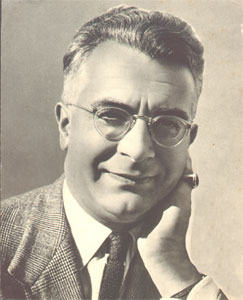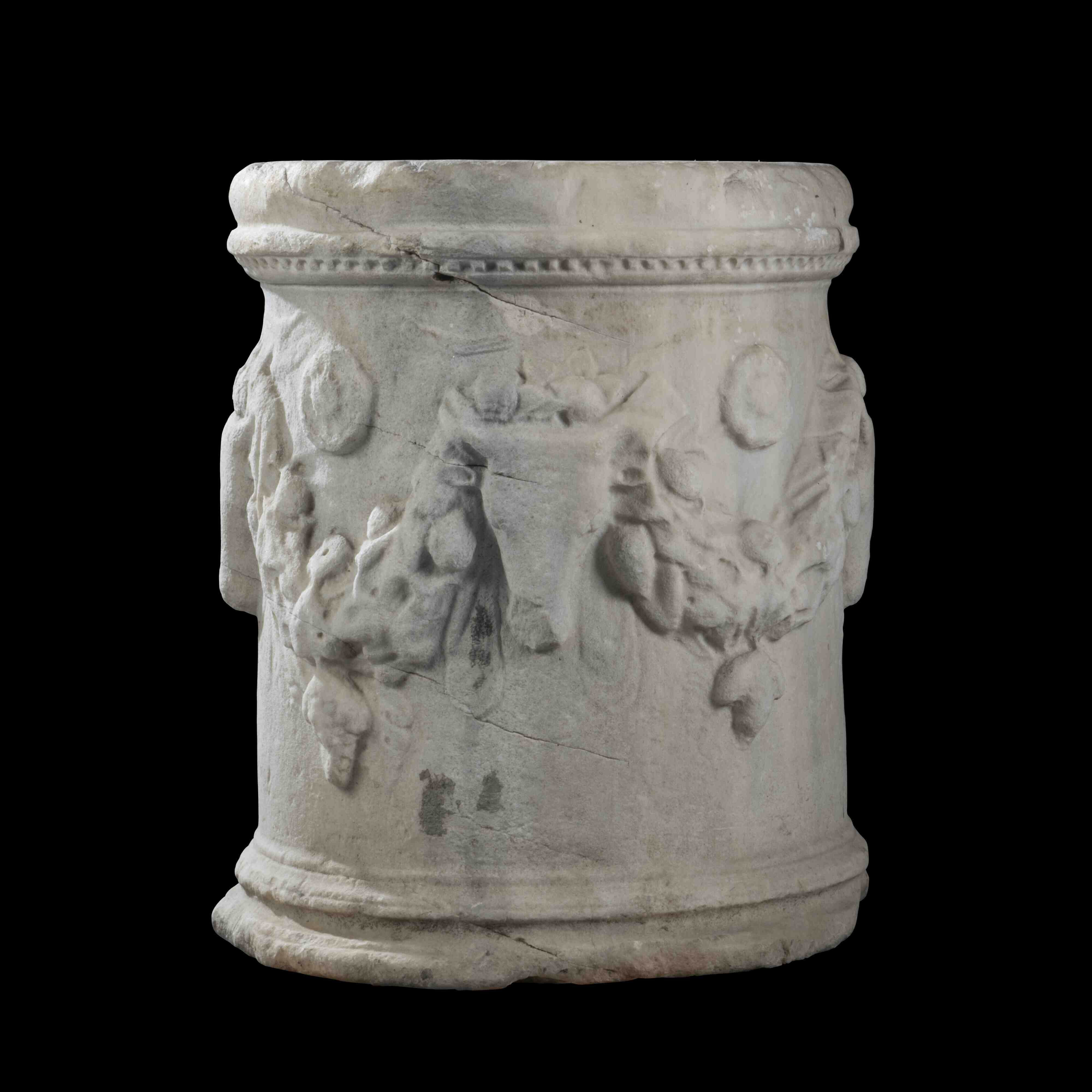An elegantly proportioned cup with slightly offset lip and swooping handles, the decoration within and without devoted to the cultural education of aristocratic youths. Both sides of the exterior feature standing draped youths flanking a central figure seated upon a stool (diphros), with subtle variations enlivening the compositions. On side A, the central youth faces right and strums a lyre, while his companions lean on walking sticks and proffer a double-flute (aulos) and vegetal crown. The tidy coiffures of all three are encircled by crowns in added red, and a seated dog - his gaze intent upon his master - is tied to the staff of the youth to the left by means of a red ribbon. The scene on the opposite side is symmetrically composed, with the writing tablet and pair of sandals suspended from the wall unequivocally placing it indoors. Here, the seated youth is nearly completely enveloped by his voluminous mantle, seemingly indifferent to the youths joining him. Most unusually, the youth before him brandishes a leopard cub by the tail – perhaps an extravagant, if unappreciated, courtship gift. Beneath the handles, a circle and ‘pi’ shaped object in reserve. The tondo of the cup’s interior is bordered by a band of stopt meanders. The draped youth within stands frontally (with considerable artistic care to render one shin and foot thusly) upon ground indicated by a segment in reserve with his head turned to his right. That arm is outstretched and resting upon a knobby staff, while the other is bent at the elbow to gesticulate with open palm. Like the youths around the exterior, he wears a crown in added red, apparently tied at the front.
Note
The presence of a leopard on the reverse is notable. Although certainly known to Classical artists, leopards were costly imports if they were imported to Athens at all. Typically artists included leopards in the exotic coterie of Dionysos and his companions, grasped by raving maenads, or their worn as garments. This cub’s inclusion here seems to signal a prestigious gift in the context of ephebic courtship. Comparable examples are few and far between, with one on contemporary courtship scene attributed to Douris (BAPD no. 7242). Philosophy and music were an integral part of Greek culture and education, with one of the highest purpose of education in Greek society being the cultivation of its young people. Accordingly they educated their children, both girls and boys, in playing music from a young age - be it the lyre or the aulos.
Roger Peyrefitte (1907-2000)
Roger Peyrefitte is a French writer, author of numerous novels, an anthology of Greek texts and historical biographies. Born in Castres in 1907, he was  educated by the Lazarist brothers. A brilliant student in the humanities, he continued his studies at the Faculté des Lettres in Toulouse, before entering the École des Sciences politiques, from which he graduated in 1930. Peyrefitte's taste was boastful, perverse and not without its share of vulgarity. He wrote of himself in Jérôme Garcin's dictionary: ‘By that time, he had realised that there were only two things that mattered: money and a name, if you weren't born with one’. He became embassy secretary in Athens from 1933 to 1938. In February 1945, he retired from the diplomatic service and began a literary career the same year. Thanks to his erudition, his vast classical culture, his concise style with its rich vocabulary, his biting irony and his abundant output, he became a leading French writer. His masterpiece remains the biography of Αlexander III of Macedonia (La jeunesse d'Alexandre; Les Conquêtes d'Alexandre; Alexandre le Grand). This work relates the life of the greatest conqueror of Antiquity from a variety of angles, incorporating social, geographical and mythological knowledge. Peyrefitte was a passionate collector in many fields.
educated by the Lazarist brothers. A brilliant student in the humanities, he continued his studies at the Faculté des Lettres in Toulouse, before entering the École des Sciences politiques, from which he graduated in 1930. Peyrefitte's taste was boastful, perverse and not without its share of vulgarity. He wrote of himself in Jérôme Garcin's dictionary: ‘By that time, he had realised that there were only two things that mattered: money and a name, if you weren't born with one’. He became embassy secretary in Athens from 1933 to 1938. In February 1945, he retired from the diplomatic service and began a literary career the same year. Thanks to his erudition, his vast classical culture, his concise style with its rich vocabulary, his biting irony and his abundant output, he became a leading French writer. His masterpiece remains the biography of Αlexander III of Macedonia (La jeunesse d'Alexandre; Les Conquêtes d'Alexandre; Alexandre le Grand). This work relates the life of the greatest conqueror of Antiquity from a variety of angles, incorporating social, geographical and mythological knowledge. Peyrefitte was a passionate collector in many fields.











